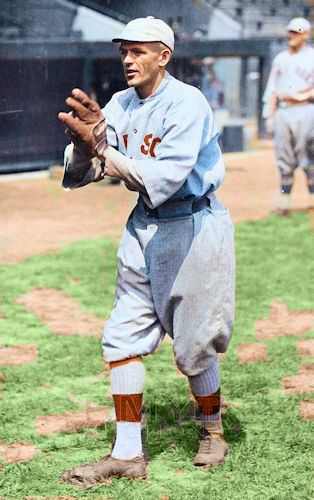 |
In April 1916, after a contract dispute, the Red Sox dealt Tris Speaker to Cleveland for two players and an estimated $50,000. One of those players was Sam Jones, and the other was Fred Thomas. The Red Sox sent Thomas to New Orleans for the 1916 season. He was invited to the Sox spring training camp in 1917 but was sent back down for more seasoning. In 1918, longtime Sox third baseman Larry Gardner was traded to Philadelphia. Nine men were used at third base during the season, but playing the most games at third was 25-year-old Fred Thomas. He played solid defensively with steady batting, and hit safely in 17 of 22 games, making just two errors during one stretch in June. Defensively he made an outstanding catch of a foul fly to help preserve Dutch Leonard’s no-hitter. With World War I underway, the director of the military draft decreed that all draft-eligible men, employed in “non-essential” occupations, must apply for work directly related to the war, or gamble being called into military service. Fred Thomas enlisted in the Navy and went to serve and play baseball for the Great Lakes Naval Air Station in Chicago. As the World Series between the Red Sox and Cubs neared, Thomas' commander was asked to give his young recruit a furlough so he could play for the Sox. The pass was granted and he met the team at the hotel wearing his seaman’s uniform. On September 17, 1918, the first game of the World Series took place. Patriotic fervor was rampant throughout the country with the United States now in the war and during the seventh inning stretch, on a whim, a brass band struck up the "Star Spangled Banner". On his way back to the dugout, Thomas took off his cap, stood at attention, and saluted the flag. The other ballplayers followed his example and then all the fans, stood saluted, and began to sing. And thus a time-honored tradition was born and continued at baseball games forever after. Fred Thomas died at a nursing home in 1986, the last survivor of the 1918 Boston Red Sox. |
|||||
